#fisheries study
Explore tagged Tumblr posts
Text
i am a very professional and official environmental tech major
(image description under cut)
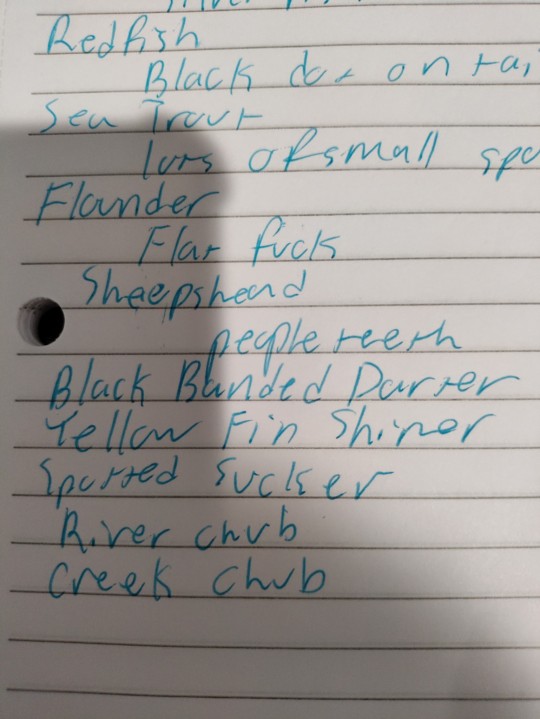
i was getting study materials and got a chuckle out of this.
image description: a zoomed in image of handwritten notes on notebook paper written in light blue ink. it is a list of several species of fish, some of which have notes under them describing the fish's physical appearance. the list reads:
Redfish
black dot on tail
sea trout
lots of small spots
Flounder
flat fuck
Sheepshead
people teeth
Black Banded Darter
Yellow Fin Shiner
Spotted Sucker
River Chub
Creek Chub
#notes#fish notes#fisheries study#fish#flat fuck#tw swearing#swearing cw#excuse my bad handwriting#i was in a hurry
0 notes
Text
I don’t actually have a modern au but I’ve been having so many thoughts about modern d’alia lately lmao
#d’alia studies applied geometry and environmental science with plans for grad school too#(she’s torn between cartography and field environmental engineering as a career)#also tutors on the side and volunteers with the city’s gardens and fisheries#always has a busy schedule but makes time for her friends whether a post-breakup brunch or helping them move across town#or dropping off baked goods on their doorstep out of the blue#lives with her bf koana who was an exchange student she met in one of her engineering-esque classes#they’re usually pretty private but they throw a banger halloween party each year#koana has a fancy espresso machine and got d’alia into coffee with cinnamon#d’alia also has a vintage typewriter where she writes cute lil love notes#regularly ‘borrows’ koana’s leather jacket too#and obsessively crossbreeds flowers in animal crossing as the one video game she plays#oh and rides a motorcycle.#dani.txt#alia/koana
16 notes
·
View notes
Text
people keep talking to me like "hey Dr. Fish! congrats Dr. Fish!" and like !!!!!!! that's me!!! I'm Dr. Fish!!!
#personal#obvs they are using my actual surname (which is not fish)#but you get the point#this does make it sound like i study fish though#for someone with multiple degrees in wildlife and fisheries i am woefully lacking in fish knowledge#i know about amphibians though! dr frog
4 notes
·
View notes
Text
rn im majoring in forestry with a focus in forest biology, but might want to switch to aquatic biology. this is a ridiculously important thing to be asking on tumblr but i cannot even begin to decide. both would be super fucking interesting and have the same number of required credits
pros and cons below the cut
pros:
get to work with wetlands more
still doing stuff with plants and animals
the program is centered on freshwater conservation which i really like
was thinking of doing a water resources minor anyway, this would be easier to get all the credits
electives for both are super flexible so i could really focus on what interests me
watershed conservation is generally better paying than forestry
better to prepare for a ms in limnology
could stay in the greater great lakes region long-term
cons:
calculus i and ii
organic chemistry i and ii
i really fucking hate math
generally harder classes
might not go for an ms anyway
#college#studyblr#bachelors degree#undergraduate#bachelor of science#environmental science#environmental studies#environmetalists#ecology#forestry#forest tech#epa#forest service#aquatic science#wildlife and fisheries#aquatics and fisheries#fish science#limnology#freshwater fish#freshwater#great lakes#lake ontario#lake erie#lake huron#lake michigan#lake superior#new york#pennsylvania#ohio#michigan
4 notes
·
View notes
Text
The Minister of Agriculture, Irrigation, and Fisheries discusses joint cooperation with the International Center for Mediterranean Agricultural Studies.
Strengthening Agricultural Cooperation: A Meeting in Bari Minister Discusses Collaboration with CIHEAM Bari Director Today, in the Italian city of Bari, Minister of Agriculture, Irrigation, and Fisheries, Major General Salem Al-Saqtri, met with Maurizio Railey, the Director of the International Center for Advanced Mediterranean Agricultural Studies (CIHEAM Bari). The two leaders explored ways to…
#agricultural#Agriculture#Center#cooperation#discusses#Fisheries#International#Irrigation#joint#Mediterranean#Minister#studies
0 notes
Text
The Role of Hybrid Solar Dryer Initiative in Combating Aflatoxins in Kenyan Fisheries
“Discover how Kenya’s Lake Victoria fisherfolk are benefiting from hybrid solar-biomass dryers to reduce postharvest losses and aflatoxin contamination in omena fish. Learn about JKUAT’s USAID-funded project and its impact on food security and economic empowerment.” Fisherfolk along the shores of Kenya’s Lake Victoria will soon benefit from a new research initiative that will improve the…
#aflatoxin contamination#aflatoxin prevention#African fisheries#climate-resilient technology#economic empowerment#fish consumption patterns#fish contamination#fish drying advancements#fish drying advancements Kenya#fish drying benefits#fish drying benefits Africa#fish drying best practices#fish drying best practices Kenya#fish drying case study#fish drying case study Africa#fish drying challenges#fish drying challenges Kenya#fish drying efficiency#fish drying efficiency Africa#fish drying equipment#fish drying equipment Kenya#fish drying future#fish drying future Africa#fish drying impact#fish drying impact Africa#fish drying innovations#fish drying innovations Kenya#fish drying methods#fish drying methods Africa#fish drying optimization
0 notes
Text
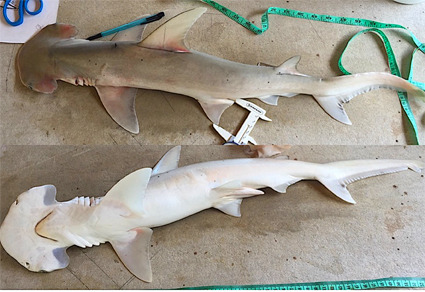
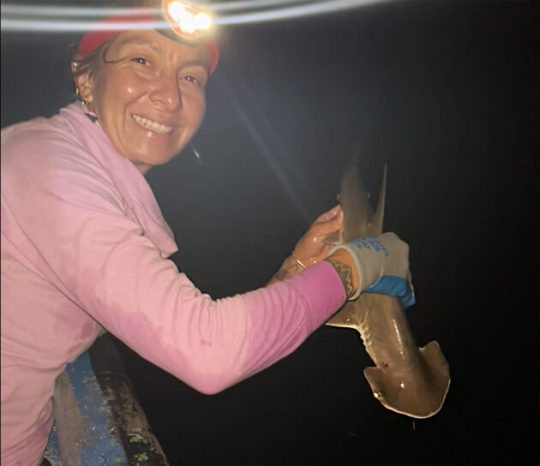
NEW HAMMERHEAD SHARK JUST DROPPED
Not every day does a new shark get discovered! Meet the Shovelbill Shark (Sphyrna alleni), a newly described species of hammerhead shark named after Microsoft co-founder and philanthropist Paul Allen. This new species is found in the coastal waters of the Caribbean and southwest Atlantic.
Hammerhead sharks are easily recognized by their laterally expanded and dorsoventrally compressed heads. Genetic studies have revealed that what was once thought to be a single bonnethead species (Sphyrna tiburo) is actually a complex, with Sphyrna alleni now recognized as a separate species. A longtime advocate for wildlife conservation, Paul Allen and his Paul G. Allen Family Foundation supported Global FinPrint, an international survey of the world’s reef sharks and rays. It was during this project that scientists conducted much of the fieldwork necessary to describe this newly recognized species. The Shovelbill Shark is smaller than the bonnethead, with distinct genetic and morphological characteristics, including a different number of vertebrae, which suggest it is separate from other hammerhead species. This new species is distributed from Belize to Southern Brazil, inhabiting estuaries, coral reefs, sandy and muddy bottom beds, seagrasses, and mangroves.

The Shovelbill Shark is a common component of artisanal fisheries in many Latin American countries and currently lacks proper management or protection. Previous reports indicate that this new species is undergoing overexploitation, making it imperative to safeguard their populations and establish fisheries regulations.
Photographs: Above is a male shovelhead shark (Sphyrna alleni), described from the Caribbean and the Southwest Atlantic. Below is Cindy Gonzalez, the lead researcher of the study, tagging the new species Sphyrna alleni (photo courtesy of the Mays Family Foundation).
Reference: Gonzales et al., 2024. Sphyrna alleni sp. nov., a new hammerhead shark (Carcharhiniformes, Sphyrnidae) from the Caribbean and the Southwest Atlantic. Zootaxa.
654 notes
·
View notes
Note
I'd love some lemon shark facts 💛

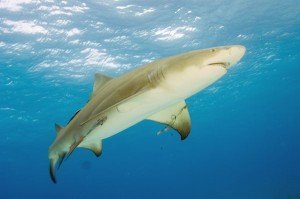
Lemon Shark or Negaprion brevirostris
They get their name from their yellowish brown coloring. Lemon sharks, unlike the lone-shark stereotype, enjoy hanging out in groups! They even have preferred individuals to hang out with!
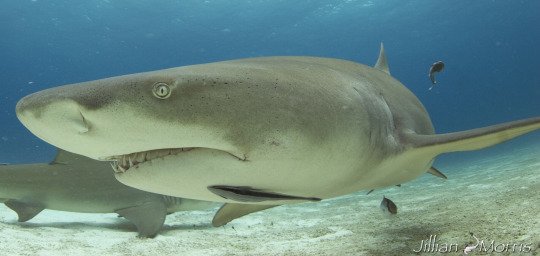
Lemon sharks are also one of the most well-understood shark species and this is because they do well in captivity. Additionally, most of our knowledge of shark physiology and biology stems from studies of lemon sharks!
Unfortunately, this species is nearly threatened; this is mostly due to overfishing. They're not only caught as bycatch, but are a target for some fisheries. Their meat, skin, and squalene are used for human consumption. It's estimated that between 70-90% of shark squalene harvested each year is used in cosmetics. (Make sure to do your research before buying makeup). To harvest the amount of squalene used for our consumption, almost 3 million sharks are killed every year. But there's a great new alternative source that's gaining traction: olives!
#biology#animal facts#wildlife#marine life#animals#science#marine ecology#marine biology#ocean#fun facts#shark#sharks#shark facts#lemon shark#lemon sharks#fish#conservation#endangered species#ecology#wildlife conservation#ecosystems#sea life#seas#sea creatures#sea animals#marine animals
331 notes
·
View notes
Text
Dandelion News - November 22-28
Like these weekly compilations? Tip me at $kaybarr1735 or check out my Dandelion Doodles!
1. Los Angeles becomes a sanctuary city for LGBTQ+ youth and immigrants as officials reject Project 2025

“The Los Angeles City Council voted unanimously Tuesday to pass the “sanctuary city” ordinance, shielding queer youth who travel to the city to receive gender-affirming care from prosecution, as well as preventing city resources from being used in immigration enforcement[….]”
2. Huge deforested areas in the tropics could regenerate naturally, study finds

“Cleared or degraded tropical forests around the world covering a combined area larger than Saudi Arabia could regrow on its own, according to new research published Oct. 30 in the journal Nature. [… T]he permanence of regrown forests is critically important to the benefits it can provide to biodiversity and the climate.”
3. Minnesota tribe could soon get a solar-powered resilience hub

“A pair of developers are working to build a microgrid at an elementary school and community center on the White Earth Reservation in northern Minnesota [… which would] provide about 12 hours worth of backup power for residents to be able to charge cell phones, power medical equipment, or stay warm in the event of a power outage.”
4. An exchange between Indonesia and Tanzania supports food security and ocean health

“Around the world, WWF helps manage […] both traditional sustainability-oriented management and science-based practices. This combination supports long-term food security and biodiversity goals. […] Local ownership and management are […] key to achieving stable fisheries and social and economic benefits.”
5. Spiky blue devils and chocolate lilies: Victorian grassland bursts with wildflowers after ecological ‘reset’

“About 70 native plant species could be found within the site, including […] four endangered species of orchid. […] Careful management, including an ecological burn in May and weed control measures to reduce pasture grasses, laid the groundwork for wildflowers to thrive.”
6. Vast forests, wetlands and lakes conserved [in Ontario]

“A vast 970-hectare area featuring thriving forests, wetlands and crystal-clear lakes northeast of Sault Ste. Marie is now protected[….] The intact forests, lakes, wetlands and shorelines support high biodiversity and are home to many threatened species[….]”
7. A New Era of Compassion: How Suncoast Humane Society is Changing Animal Welfare for Good
“Our campus includes outdoor play areas, trails, and even a small swimming pool to encourage animals to stay active, explore, and simply be themselves.”
8. Building climate resilient cocoa farming in West Africa
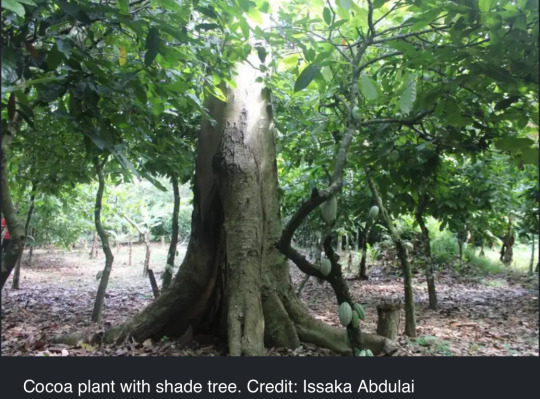
“[… A] promising new approach to improve climate resilience in cocoa agroforestry across West Africa […] focuses on the critical role of leaf "phenology"—the seasonal changes in leaf cycles—in trees providing shade in managing climate impacts. [… S]hade trees that lose their leaves entirely during the dry season proved especially beneficial in maintaining soil moisture[….]”
9. New Zealanders save more than 30 stranded whales by lifting them on sheets

“[The Department of Conservation] praised as “incredible” the efforts made by hundreds of people to help save the foundering pod. “It’s amazing to witness the genuine care and compassion people have shown toward these magnificent animals[….]””
10. 'A really sobering moment:' English zoo fights extinction of freshwater Boxer pupfish

“Whipsnade Zoo aquarists were recently told by conservation partners that that the world's last remaining Boxer pupfish was in their care, prompting the zoo to carry out the immediate transport of all the "precious" Boxer pupfish eggs to another local conservation and education charity in the name of species preservation.”
November 15-21 news here | (all credit for images and written material can be found at the source linked; I don’t claim credit for anything but curating.)
#hopepunk#good news#los angeles#us politics#lgbt+#immigrants#deforestation#nature#minnesota#native american#indigenous#electricity#solar panels#solar energy#solar power#ocean#fishing#food insecurity#wildflowers#native wildflowers#native plants#conservation#canada#animal shelters#humane society#agroforestry#new zealand#whale#fish#endangered
128 notes
·
View notes
Text



The Very Nice Rice's Whale
Rice's whale, also known as the Gulf of Mexico whale (Balaenoptera ricei) is a species of whale found only in the Gulf of Mexico. Originally the species was thought to be restricted to the northeastern part of the gulf, but it is now known to travel throughout the area. They keep close to the coast, and are rarely seen in waters deeper than 400 m (1300 ft). Originally, Rice's whale was considered a subspecies of Bryde's whale (B. edeni), but in 2021 genetic testing revealed it to be a completely separate species.
Gulf of Mexico whales are moderately sized; females grow to 12.65 meters (41.5 ft) in length and 13.87 metric tons (15.28 US tons), while males are slightly smaller at 11.26 meters (36.9 ft) long. Adults are plain grey and three long ridges on the top of their heads, which makes up a full quarter of their body length. The throat pouches and the underside of the tail are pink.
B. ricei follows a diel vertical diving pattern; they spend the day foraging near the bottom of the ocean, and rise to the surface at night. Though little is known about the diet of Rice's whales, it is suspected that they feed on lanternfish, hatchetfish, and silver-rag driftfish, which are abundant at great depths. Because they are baleen whales, they likely ingest large quantities of water and then filter their catch through their baleen plates.
The breeding habits of Gulf of Mexico have not been studied, but scientists extrapolating from information on the closely related Bryde's whale believe that B. ricei reproduce once every two or three years. Pregnancies may last 10-12 months, and subsequent nursing may last for up to 2 years. Scientists also estimate that Rice's whale reaches sexual maturity at 9 years old, and can breed year-round due to the warm, food-rich waters in which they live. Adults are often seen in small groups of 2-4.
Conservation status: The Gulf of Mexico whale is considered Critically Endangered by the IUCN. Less than 100 individuals exist in the wild; most scientists estimate the population to be no greater than 33. Their primary threats are boat strikes and the hazards included in drilling for oil, including underwater noise and oil spills.
Photos
National Marine Fisheries Service
NOAA Fishieries
#rice's whale#gulf of mexico whale#Artiodactyla#Balaenopteridae#baleen whales#rorquals#whales#cetaceans#even toed ungulates#ungulates#mammals#marine fauna#marine mammals#open ocean#open ocean mammals#pelagic fauna#pelagic mammals#atlantic ocean#gulf of mexico#animal facts#biology#zoology#ecology
111 notes
·
View notes
Photo

🦞 Japanese species of the genus Penaeus Tokyo: [Fisheries Bureau], 1900. Original source Image description: Historical scientific illustration depicting four Japanese species of the genus Penaeus, a group of shrimp-like crustaceans. Each species is shown in detailed side profile with distinct coloration and anatomical features, such as segmented bodies, elongated antennae, multiple pairs of legs, and varying tail shapes. The species are labeled as Penaeus lamellatus, Velutinus, Penaeus tenellus, and Curvirostris, showcasing differences in size, body texture, and appendage structure, emphasizing their classification within crustacea. The image is rendered in naturalistic colors on a plain beige background, highlighting morphological distinctions for ichthyological study.
30 notes
·
View notes
Text
BS of one kind or another
Deep breath. So. Last night my son called me. He has gotten sick again (his teenage bout with tickborne illness left him permanently immune-compromised) and he gets visual issues like double vision or "Alice-in-Wonderland Syndrome" when he is sick. Ergo he is not safe to drive. And this morning was his lab practical for organic chemistry. I agreed to drive him.
This morning we set off to the college. Him woozy and clutching a papertowel to his nose, because spectacular nosebleeds are also a frequent issue for him. When we got there, I decided to walk a circuit around the campus while he was in lab. About two-ish miles? It was a nice, cool, breezy day for it. As I came around the front side of the campus I saw a small building set aside for the Office of Alumni Somethingorother. Hmm. I had been wondering about auditing a class in the fall as an alum.
I popped inside and the receptionist told me I should see the someone at the Registrar's office. Next building over. I went there, and the lady behind the counter gave me a form, but told me I needed to see Josh in the Admissions office. His signature, the professor's, and the provost's are necessary. That, honestly, seems a bit like overkill for one old grad coming back to audit a course, but whatever.
The thing is, Son isn't going to pass organic chem.* As it is a requirement for his degree (and it really, really shouldn't be), he's going to have to take it again. Not only that, but my daughter is going to have to take it at her college the following academic year. So, I will continue to be on the hook for tutor/study partner for this for a while. It sure would be great if I knew a bit more about it!
I feel like it is odd and unfair that students getting a biology degree have to pass a 400-level chem class. The only people taking STEM classes at that level should be the students who are majoring in them. Fisheries Biology requires that chemistry plus a 400-level geology class for the major. The basic Biology BS degree requires SIX semesters of chemistry, including 4 semesters of organic chem, and TWO physics courses. That's for a plain, ordinary, BS in biology.
I think this school has just gone batshit crazy in the 30 years since I went there. I do not know what to think.
'* He may pass the lab - which oddly enough has a separate grade from the lecture? Why could a lab/lecture course have separate grades? Sheesh.
31 notes
·
View notes
Note
Did you hear about the collapse of the Alaskan snow crab population/closure of the fishery two years ago? I don’t think they bounced back last year. It’s a sad day for crabs.
yeah :( it’s really sad to see. the population change has been so huge, it’s estimated that 10 billion crabs disappeared between 2018-2023.
sorry to get serious for a second but it’s really hard sometimes to be coming of age in a world where you can see people and basically every living thing under constant threat. i’m studying marine biology at the moment and it can be very disheartening when a major part of each class is discussing pollution, climate change, species going extinct, etc. it can really feel like “hey aren’t you excited to learn about that thing you love? well get ready to hear about how the people in power are totally destroying it!”
and it’s frustrating when i tell people what im studying and they say things like “oh wow! so you’re gonna save the planet huh” because on the one hand, i know they’re trying to be nice, but on the other hand, this is a sentiment i and many other people my age have seen and heard so many times and it’s not the comfort to us that some people think. i’m 20, i shouldnt HAVE to save the planet. if we agree that the planet needs to be saved, why wait until we’re old enough to do the things they should have done before we were even born? sorry i got off topic. it just makes me really sad and frustrated.
edit: this ask is from august 2024, since then the alaskan snow crab population has shown some signs of recovery, but things are still not good for them. also i forgot this ask in my drafts so long that i changed majors and also turned 21. i am so sorry it took me that long. i don’t even know why i didn’t post it, maybe i thought it was too depressing or something
34 notes
·
View notes
Text
Serving up the tiniest cuteness 🥰
Zooplankton can be subdivided into two major groups. Holoplankton (copepods and krill) spend their entire lives as plankton and thus provide major food sources for pelagic fisheries. Meroplankton (larvae of animals like barnacles, mussels, annelids, and fish) spend only part of their lives as plankton.
Copepods like the one in this video can be found in massive numbers across the world ocean. They play an important role in ocean food webs as predators—they eat even smaller diatoms and phytoplankton—and prey on animals like jellies, fish, and filter feeders.
Zooplankton are notoriously difficult to sample. Despite opportunities for mixing, individual zooplankton are tiny, and species are often patchily distributed. Coastal oceans are physically dynamic, high-energy environments. Winds, currents, and upwelling fronts affect the availability of nutrients and distribution of food that control zooplankton growth and dispersal. To tackle these challenges, the MBARI team developed the SIMZ program to explore more efficient zooplankton sampling and identification methods.
Traditionally, tow-nets are used to sample plankton along paths through the water. Because these paths often cross smaller environmental patches, they frequently lack the precision to associate zooplankton species' distribution and abundance with particular physical and biological processes. MBARI engineers have equipped an autonomous underwater vehicle (AUV) with gulpers—bottles that rapidly inhale discrete water samples—to better understand the spatial patchiness in zooplankton abundance. The AUV is equipped with sensors that measure things like temperature and salinity, and onboard computer software that instructs the Gulper AUV to recognize and autonomously sample specific environmental patches, such as upwelling fronts or chlorophyll layers. This "surgical" approach to ocean sampling allows SIMZ researchers to study the effects of specific physical processes on zooplankton distribution and diversity.
110 notes
·
View notes
Text
New research confirms that Tsleil-Waututh Nation has consistently and sustainably fished for chum salmon for 1,200 years longer than the archaeological record had previously demonstrated.
This supports Tsleil-Waututh knowledge and further demonstrates that Tsleil-Waututh people have been sustainably living on and stewarding their traditional territory for longer than Western science may recognize.
Researchers from Tsleil-Waututh Nation and UBC analyzed 245 salmon bones gathered as part of an archaeological dig in the 1960s and 1970s from təmtəmíxʷtən, a large and important site for the Nation located near what many British Columbians now know as Belcarra.
The research builds on a previous study which showed that the Nation sustainably and preferentially fished for chum salmon for 1,300 years, from about 400 BC to 1200.
Using carbon dating on eight new samples, the researchers extended this period of time a further 1,200 years, confirming Tsleil-Waututh ancestors fished for salmon from about 850 BC to 1650. [...]
Continue Reading.
Tagging: @politicsofcanada
#cdnpoli#flora & fauna#canadian history#təmtəmíxʷtən#Tsleil-Waututh Nation#British Columbia#conservation#sustainability#Indigenous
531 notes
·
View notes
Text
Excerpt from this story from Mother Jones:
President Donald Trump wants federal agencies to fast-track applications for deep-sea mining in an effort to make the United States a global leader in the nascent industry.
Trump issued an executive order Thursday declaring that US policy includes “creating a robust domestic supply chain for critical minerals derived from seabed resources to support economic growth, reindustrialization, and military preparedness.” He described seabed mining as both an economic and national security imperative necessary to counter China.
“Our Nation must take immediate action to accelerate the responsible development of seabed mineral resources, quantify the Nation’s endowment of seabed minerals, reinvigorate American leadership in associated extraction and processing technologies, and ensure secure supply chains for our defense, infrastructure, and energy sectors,” the executive order says.
Increasingly, mining companies have been eager to scrape the ocean floor for cobalt, manganese, nickel and other metals that could help make batteries for cellphones and electric cars. But scientists have warned that the process could irreparably alter the seabed, kill extremely rare sea creatures that haven’t been named or studied, and—depending on how the metals are carried up to the surface—risk introducing metals into fisheries that many Pacific peoples rely upon.
The order aims to jump-start the industry that has been spearheaded by small Pacific nations like Nauru seeking economic growth, but has been facing growing pushback from Indigenous advocates who fear the lasting consequences of mining the deep sea.
27 notes
·
View notes